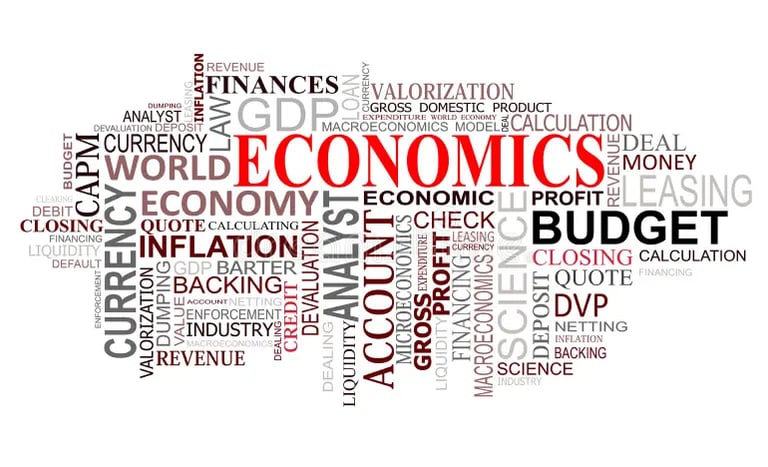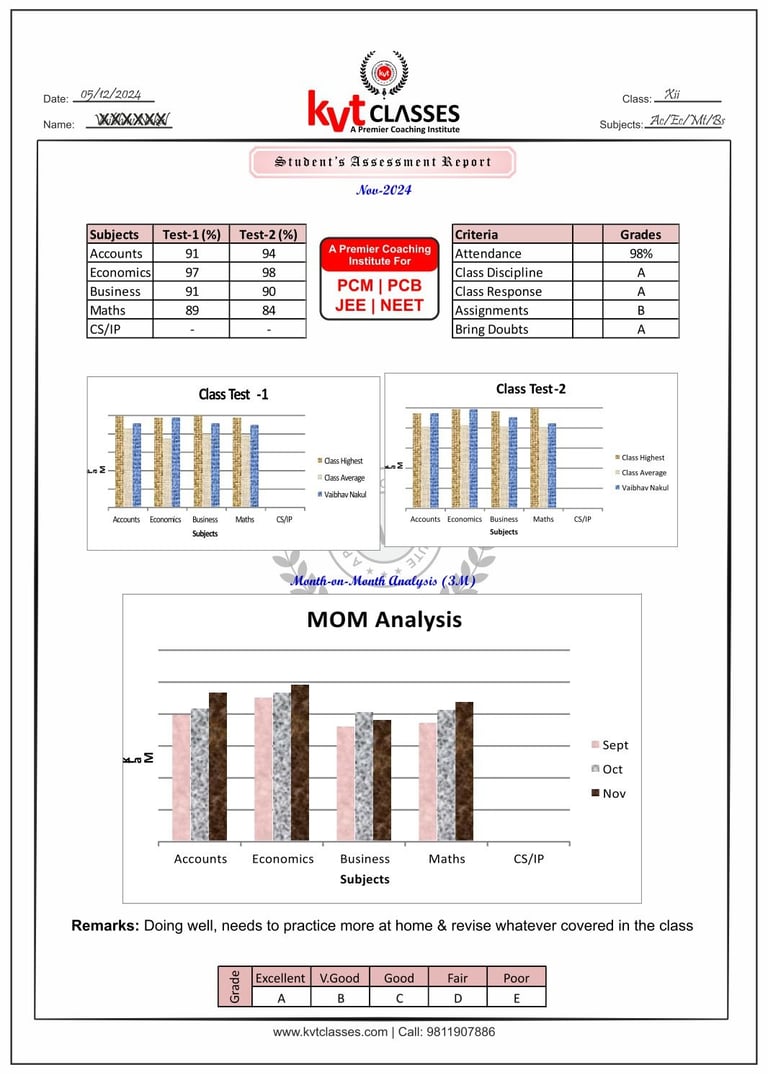Economics XI-XII
Economics is one of the social sciences, which has great influence on every human being. As economic life and the economy go through changes, the need to ground education in children’s own experience becomes essential. While doing so, it is imperative to provide them opportunities to acquire analytical skills to observe and understand the economic realities.
At senior secondary stage, the learners are in a position to understand abstract ideas, exercise the power of thinking and to develop their own perception. It is at this stage, the learners are exposed to the rigour of the discipline of economics in a systematic way.
The economics courses are introduced in such a way that in the initial stage, the learners are introduced to the economic realities that the nation is facing today along with some basic statistical tools to understand these broader economic realities. In the later stage, the learners are introduced to economics as a theory of abstraction.
The economics courses also contain many projects and activities. These will provide opportunities for the learners to explore various economic issues both from their day-to-day life and also from issues, which are broader and invisible in nature. The academic skills that they learn in these courses would help to develop the projects and activities. The syllabus is also expected to provide opportunities to use information and communication technologies to facilitate their learning process.


Objectives:
• Understanding of some basic economic concepts and development of economic reasoning which the learners can apply in their day-to-day life as citizens, workers and consumers.
• Realisation of learners’ role in nation building and sensitivity to the economic issues that the nation is facing today.
• Equipment with basic tools of economics and statistics to analyse economic issues. This is pertinent for even those who may not pursue this course beyond senior secondary stage.
• Development of understanding that there can be more than one view on any economic issue and necessary skills to argue logically with reasoning.
Pattern of Studies
● Interactive Classes
● Home Assignments
● Class Notes
● Periodic Class Tests
● Student's Monthly Report
● One to One Attention
● Doubt Classes
● Syllabus Revision
Report Analysis Parameters
● Tests Marks
● Attendance
● Class Discipline
● Class Response
● Home Assignments
● Student's Comparison with Class
● Last 3 Months Performance
● Special Remarks
Student's Sample Report
Class Tests
● Two tests per subject in a month
● Test schedule on Saturday in extra hours
● Result within 1 week of test conduct
● Test discussion on result day
● Mistakes rectification briefing


Conduct of Classes
● On board explanation with notes
● Make Concept clear with practical examples
● Interactive class sessions
● Home work / Assignment at the end of the class
● Home work / Assignment check in the next class
● Quick recap of previous class in the next class
● Two tests per month/subject on Saturdays
● Class duration 1 Hr/sub alternate days (3Hrs./wk)
● Extra classes provided when needed
Classes Schedule 2024-25
Science Students Class XI-XII
Note: Class Tests will be conducted on Saturday in extra hours
Syllabus & Marks Weightage [ Class-XI ]
Syllabus & Marks Weightage [ Class-XII ]
Part A: Statistics for Economics
In this course, the learners are expected to acquire skills in collection, organisation and presentation of quantitative and qualitative information pertaining to various simple economic aspects systematically. It also intends to provide some basic statistical tools to analyse, and interpret any economic information and draw appropriate inferences. In this process, the learners are also expected to understand the behaviour of various economic data.
Unit 1: Introduction 10 Periods
What is Economics?
Meaning, scope, functions and importance of statistics in Economics
Unit 2: Collection, Organisation and Presentation of data 30 Periods
Collection of data - sources of data - primary and secondary; how basic data is collected with concepts of Sampling; methods of collecting data; some important sources of secondary data: Census of India and National Sample Survey Organisation.
Organisation of Data: Meaning and types of variables; Frequency Distribution.
Presentation of Data: Tabular Presentation and Diagrammatic Presentation of Data: (i) Geometric forms (bar diagrams and pie diagrams), (ii) Frequency diagrams (histogram, polygon and Ogive) and (iii) Arithmetic line graphs (time series graph).
Unit 3: Statistical Tools and Interpretation 50 Periods
For all the numerical problems and solutions, the appropriate economic interpretation may be attempted. This means, the students need to solve the problems and provide interpretation for the results derived.
Measures of Central Tendency- Arithmetic mean, Median and Mode
Correlation – meaning and properties, scatter diagram; measures of correlation - Karl Pearson's method (two variables ungrouped data) Spearman's rank correlation (Non-Repeated Ranks and Repeated Ranks).
Introduction to Index Numbers - meaning, types - Wholesale Price Index, Consumer Price Index and index of industrial production, uses of index numbers; Inflation and Index Numbers, Simple Aggregative Method.
Part B: Introductory Microeconomics
Unit 4: Introduction 10 Periods
Meaning of microeconomics and macroeconomics; positive and normative economics
What is an economy? Central problems of an economy: what, how and for whom to produce; concepts of Production Possibility Frontier and Opportunity Cost.
Unit 5: Consumer's Equilibrium and Demand 40 Periods
Consumer's equilibrium - meaning of Utility, Marginal Utility, Law of Diminishing Marginal Utility, conditions of consumer's equilibrium using marginal utility analysis.
Indifference curve analysis of consumer's equilibrium-the consumer's budget (budget set and budget line), preferences of the consumer (indifference curve, indifference map) and conditions of consumer's equilibrium.
Demand, market demand, determinants of demand, demand schedule, demand curve and its slope, movement along and shifts in the demand curve; price elasticity of demand - factors affecting price elasticity of demand; measurement of price elasticity of demand – percentage-change method and total expenditure method.
Unit 6: Producer Behaviour and Supply 35 Periods
Meaning of Production Function – Short-Run and Long-Run
Total Product, Average Product and Marginal Product.
Returns to a Factor
Cost – Short run costs - Total Cost, Total Fixed Cost, Total Variable Cost; Average Cost; Average Fixed Cost, Average Variable Cost and Marginal Cost - meaning and their relationships.
Revenue – Total Revenue, Average Revenue and Marginal Revenue - meaning and their relationship.
Producer's Equilibrium - meaning and its conditions in terms of Marginal Revenue-Marginal Cost.
Supply, market supply, determinants of supply, supply schedule, supply curve and its slope, movements along and shifts in supply curve, price elasticity of supply; measurement of price elasticity of supply - percentage-change method.
Unit 7: Perfect Competition - Price Determination and simple applications. 25 Periods
Perfect competition - Features; Determination of market equilibrium and effects of shifts in demand and supply. (Short Run Only)
Simple Applications of Demand and Supply: Price ceiling, Price floor.
Part C: Project in Economics 20 Periods
Guidelines as given in Class XII curriculum
Detailed Syllabus [ Class-XI ]
Detailed Syllabus [ Class-XII ]
Part A: Introductory Macroeconomics
Unit 1: National Income and Related Aggregates 30 Periods
What is Macroeconomics?
Basic concepts in macroeconomics: consumption goods, capital goods, final goods, intermediate goods; stocks and flows; gross investment and depreciation.
Circular flow of income (two sector model); Methods of calculating National Income - Value Added or Product method, Expenditure method, Income method.
Aggregates related to National Income:
Gross National Product (GNP), Net National Product (NNP), Gross Domestic Product (GDP) and Net Domestic Product (NDP) - at market price, at factor cost; Real and Nominal GDP
GDP Deflator, GDP and Welfare
Unit 2: Money and Banking 15 Periods
Money – meaning and functions, supply of money - Currency held by the public and net demand deposits held by commercial banks.
Money creation by the commercial banking system.
Central bank and its functions (example of the Reserve Bank of India): Bank of issue, Govt. Bank, Banker's Bank, Control of Credit through Bank Rate, Cash Reserve Ratio (CRR), Statutory Liquidity Ratio (SLR), Repo Rate and Reverse Repo Rate, Open Market Operations, Margin requirement.
Unit 3: Determination of Income and Employment 30 Periods
Aggregate demand and its components.
Propensity to consume and propensity to save (average and marginal).
Short-run equilibrium output; investment multiplier and its mechanism.
Meaning of full employment and involuntary unemployment.
Problems of excess demand and deficient demand; measures to correct them - changes in government spending, taxes and money supply.
Unit 4: Government Budget and the Economy 17 Periods
Government budget - meaning, objectives and components.
Classification of receipts - revenue receipts and capital receipts;
Classification of expenditure – revenue expenditure and capital expenditure.
Balanced, Surplus and Deficit Budget – measures of government deficit.
Unit 5: Balance of Payments 18 Periods
Balance of payments account - meaning and components;
Balance of payments – Surplus and Deficit
Foreign exchange rate - meaning of fixed and flexible rates and managed floating.
Determination of exchange rate in a free market, Merits and demerits of flexible and fixed exchange rate.
Managed Floating exchange rate system
Part B: Indian Economic Development
Unit 6: Development Experience (1947-90) and Economic Reforms since 1991: 28 Periods
A brief introduction of the state of Indian economy on the eve of independence. Indian economic system and common goals of Five Year Plans.
Main features, problems and policies of agriculture (institutional aspects and new agricultural strategy), industry (IPR 1956; SSI – role & importance) and foreign trade.
Economic Reforms since 1991:
Features and appraisals of liberalization, globalization and privatization (LPG policy); Concepts of demonetization and GST
Unit 7: Current challenges facing Indian Economy 60 Periods
Human Capital Formation: How people become resource; Role of human capital in economic development; Growth of Education Sector in India
Rural development: Key issues - credit and marketing - role of cooperatives; agricultural diversification; alternative farming - organic farming
Employment: Growth and changes in work force participation rate in formal and informal sectors; problems and policies
Sustainable Economic Development: Meaning, Effects of Economic Development on Resources and Environment, including global warming
Unit 8: Development Experience of India: 12 Periods
A comparison with neighbours
India and Pakistan
India and China
Issues: economic growth, population, sectoral development and other Human Development Indicators
Part C: Project in Economics 20 Periods
